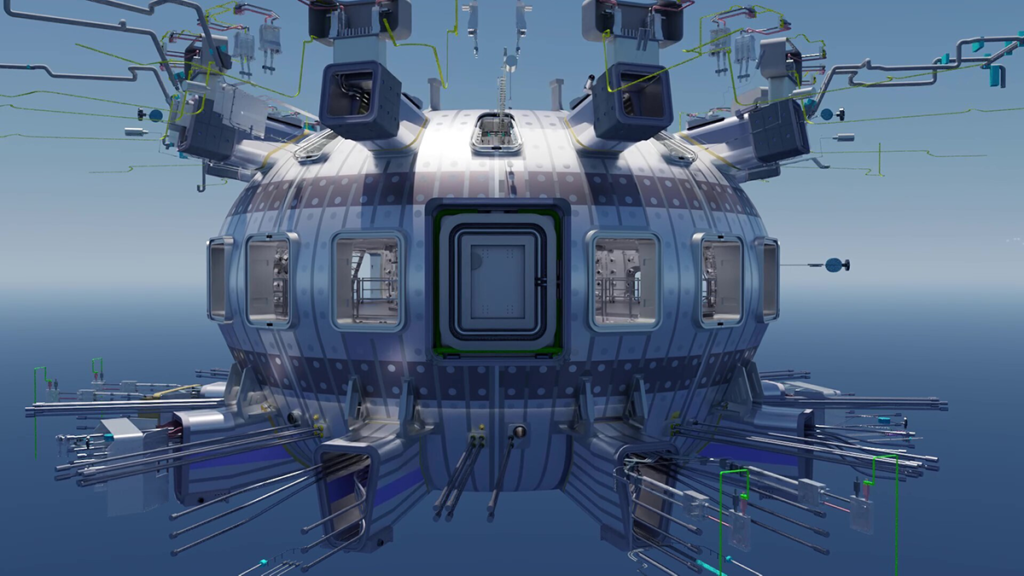As global climate change accelerates, finding and securing clean energy is a crucial challenge for many researchers, organisations and governments. Madison Haung from NVIDIA discusses.
The UK’s Atomic Energy Authority (UKAEA), through an evaluation project at the University of Manchester, has been testing the NVIDIA Omniverse simulation platform to accelerate the design and development of a full-scale fusion reactor that could put clean power on the grid in the coming years.
Over the past several decades, scientists have experimented with ways to create fusion energy, which produces zero carbon and low radioactivity. Such technology could provide virtually limitless clean, safe and affordable energy to meet the world’s growing demand.
Fusion is the principle that energy can be released by combining atomic nuclei together. But fusion energy has not yet been successfully scaled for production due to high energy input needs and unpredictable behaviour of the fusion reaction.
Fusion reaction powers the sun, where massive gravitational pressures allow fusion to happen naturally at temperatures around 27 million degrees Fahrenheit. But Earth doesn’t have the same gravitational pressure as the sun, and this means that temperatures to produce fusion need to be much higher — above 180 million degrees.
To replicate the power of the sun on Earth, researchers and engineers are using the latest advances in data science and extreme-scale computing to develop designs for fusion reactors. With NVIDIA Omniverse, researchers could potentially build a fully functioning digital twin of a reactor, helping ensure the most efficient designs are selected for construction.
Accelerating design, simulation and real-time collaboration
Building a digital twin that accurately represents all reactor components, the plasma, and the control and maintenance systems is a massive challenge — one that can benefit greatly from AI, exascale GPU computing, and physically accurate simulation software.
It starts with the design of a fusion reactor, which requires a large number of parts and inputs from large teams of engineering, design and research experts throughout the process. “There are many different components, and we have to take into account lots of different areas of physics and engineering,” said Lee Margetts, UKAEA chair of digital engineering for nuclear fusion at the University of Manchester. “If we make a design change in one system, this has a knock-on effect on other systems.”
Experts from various domains are involved in the project. Each team member uses different computer-aided design applications or simulation tools, and an expert’s work in one domain depends on the data from others working in different domains.
The UKAEA team is exploring Omniverse to help them work together in a real-time simulation environment, so they can see the design of the whole machine rather than only individual subcomponents.
Omniverse has been critical in keeping all these moving parts in sync. By enabling all tools and applications to connect, Omniverse allows the engineers working on the reactor design to simultaneously collaborate from a single source of truth.
“We can see three different engineers, from three different locations, working on three different components of a reactor in three different packages,” said Muhammad Omer, a researcher on the project.
Omer explained that when experimenting in Omniverse, the team achieved photorealism in their reactor designs using the platform’s core abilities to import full-fidelity 3D data. They could also visualise in real time with the RTX Renderer, which made it easy for them to compare different design options for components.
